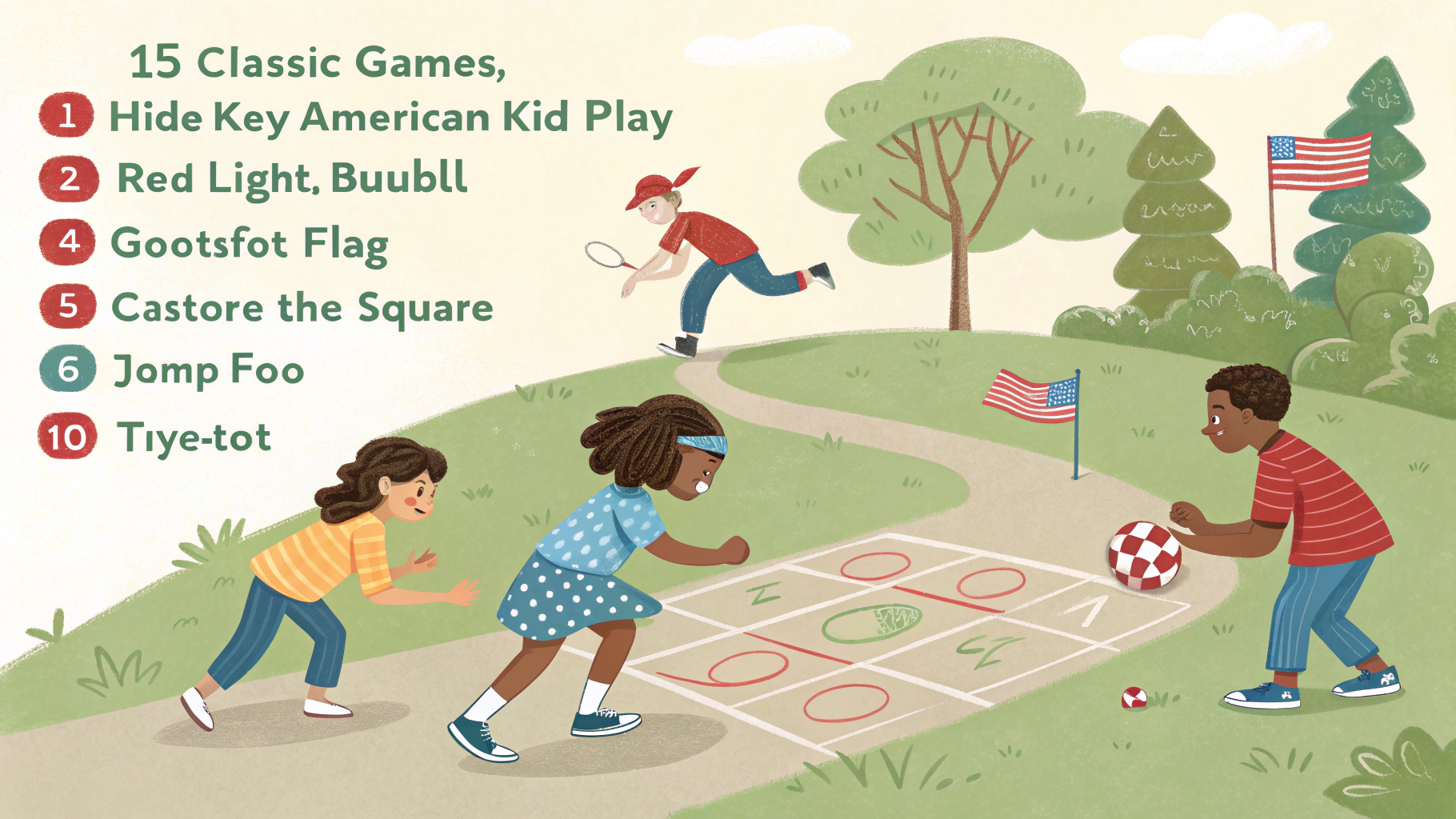Training in the fundamental skills needed for games is crucial in a child's development, offering immense benefits in physical wellness, cooperation, and strategic thinking. This guide outlines '15 Games Every American Kid Should Play' and provides a detailed roadmap for honing the required skills. The framework included encompasses technical components, drill progressions, implementation strategies, common mistakes, and coaching points. Whether you are a parent, coach, or educator, this guide will help in fostering a holistic development approach for young athletes.
Skill Overview
- Importance in Sport: Engaging kids in multiple games exposes them to diverse motor skills, strategic thinking, and teamwork, which are crucial in achieving excellence in sports. It builds a foundation of general athleticism and introduces them to various disciplines.
- Key Components: Fundamental movements like running, jumping, throwing, catching, and strategic components such as teamwork, communication, and game understanding.
- Athletic Requirements: Balance, coordination, strength, agility, flexibility, and endurance.
- Application Scenarios: From school physical education programs to community sports leagues, children use these skills to excel in different sports environments.
Technical Components
- Fundamental Mechanics: Understanding the basic rules and mechanics of each game, such as dribbling in basketball, passing in soccer, or hitting in baseball.
- Key Movement Patterns: Developing motor skills such as dynamic movements, static holds, bilateral coordination, and reaction time.
- Sport-Specific Applications: Each sport has specific drills that target particular skills, like improving a tennis serve or a football throw.
- Performance Indicators: Metrics like speed, accuracy, strength, and endurance to assess proficiency.
Drill Progression
This section provides a structured progression for skill development across three levels, ensuring continuous improvement.
| Level | Description | Examples |
|---|---|---|
| Beginner Drills | Focus on basic skills and fundamental movements. |
|
| Intermediate Exercises | Introduction to combination drills and strategic understanding. |
|
| Advanced Training Methods | Comprehensive game scenarios and advanced techniques. |
|
Training Implementation
- Practice Frequency: A balanced routine of 3-5 sessions per week, with variation in focus to avoid burnout.
- Integration with Other Training: Include strength training and flexibility exercises, enhance overall physical capacity.
- Season-Specific Modifications: Adjust volume and intensity based on the competitive calendar, with off-season focusing on skill development and in-season focusing on performance.
- Performance Metrics: Track improvements in specific skill sets, endurance tests, and performance output in games.
Common Mistakes
- Technical Errors: Missteps include incorrect foot placement, improper body alignment, and inefficient hand-eye coordination.
- Training Mistakes: Overtraining or insufficient skill variation can lead to skill stagnation and decreased motivation.
- Correction Strategies: Use video analysis and hands-on demonstration to illustrate correct techniques and form.
- Prevention Tips: Regularly assess form and technique and incorporate recovery days to prevent injury and burnout.
Coaching Points
- Key Teaching Cues: Use clear, concise verbal cues to guide young athletes through movements, like "Look up," "Stay low," or "Follow through."
- Observation Guidelines: Focus on athletes' form, response to coaching, engagement levels, and skill execution consistency.
- Feedback Methods: Employ instant feedback during drills combined with constructive criticism post-session to reinforce learning.
- Progress Markers: Create a milestone checklist to track basic skills, intermediate executions, and advanced understanding.
In conclusion, by following this structured guide, young athletes will not only develop essential skills in various sports but also gain invaluable life skills such as perseverance, discipline, and teamwork. Regular assessment and adaptive coaching ensure that every child progresses at their pace, gaining confidence and competence in their athletic endeavors. Encouraging structured play and diverse physical engagements is instrumental in fostering a well-rounded growing experience.











 浙公网安备
33010002000092号
浙公网安备
33010002000092号 浙B2-20120091-4
浙B2-20120091-4